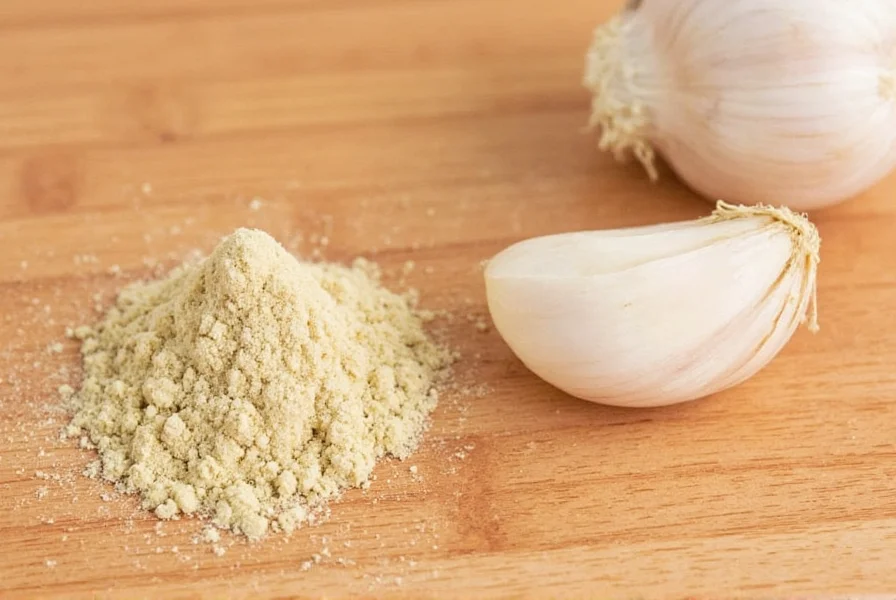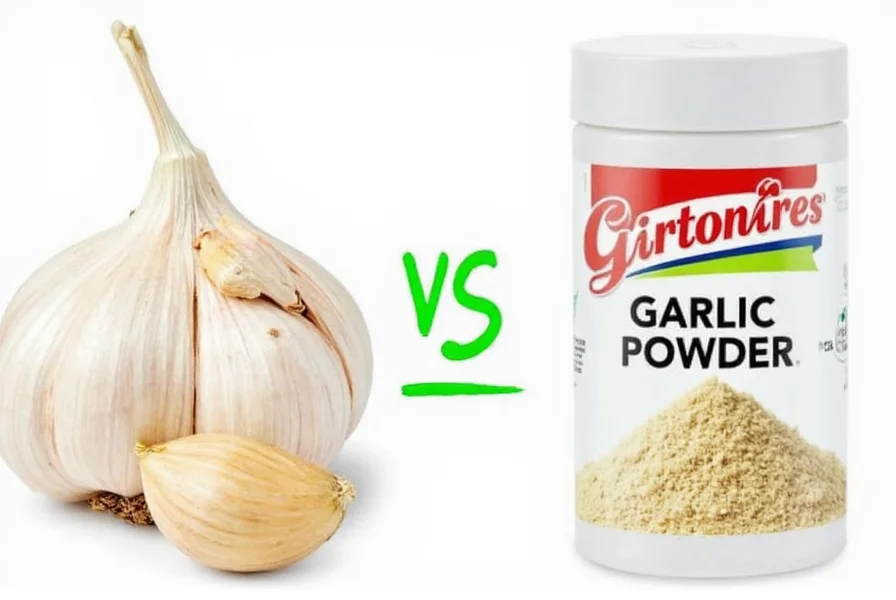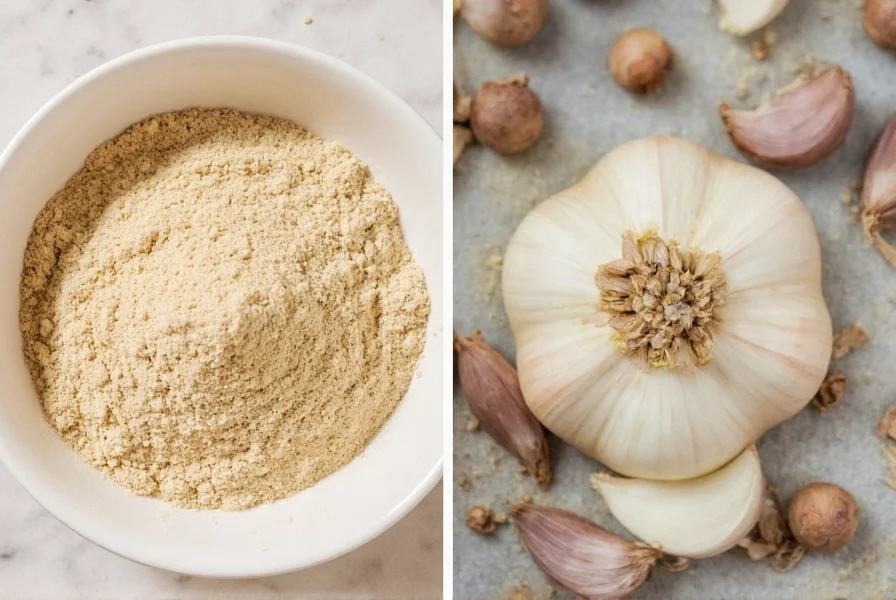Converting fresh garlic to garlic powder requires understanding the concentration difference between these two forms. Garlic powder is dehydrated and concentrated, making it significantly more potent by volume than fresh cloves. This garlic measurement conversion guide provides professional kitchen-tested ratios that home cooks can rely on for consistent results.
Understanding Garlic Clove to Powder Conversion Ratios
When substituting garlic powder for fresh garlic (or vice versa), the key factor is moisture content. Fresh garlic contains about 60% water, while garlic powder is completely dehydrated. This fundamental difference explains why you need less powder to achieve similar flavor intensity.
| Garlic Cloves | Garlic Powder Equivalent | Best For |
|---|---|---|
| 1 medium clove | 1/8 teaspoon | Delicate sauces, dressings |
| 3 cloves | 1/4 teaspoon | Stews, soups, marinades |
| 6 cloves | 1/2 teaspoon | Roasts, casseroles, meat rubs |
| 12 cloves | 1 teaspoon | Dry rubs, spice blends, long-cooking dishes |
Flavor Profile Differences Between Fresh Garlic and Powder
While the garlic clove to powder conversion provides volume equivalence, the flavor profiles differ significantly. Fresh garlic delivers a bright, pungent, and complex flavor that mellows when cooked. Garlic powder offers a more consistent but less nuanced taste that distributes evenly throughout dishes.
Chefs note that garlic powder works best in dry applications or long-cooking dishes where fresh garlic might burn. For finishing touches or dishes where garlic should shine prominently, fresh cloves remain superior. Understanding these garlic powder substitution nuances helps you make informed decisions in your cooking process.

Practical Substitution Guidelines
When converting recipes that call for fresh garlic to use powder (or vice versa), consider these professional tips:
- For immediate flavor impact in cold dishes, use fresh garlic as powder won't activate properly
- In baked goods or dry spice rubs, garlic powder distributes more evenly than minced fresh garlic
- When substituting powder for fresh in slow-cooked dishes, add powder at the beginning to allow full flavor development
- For garlic bread or finishing oils, always use fresh garlic for optimal aroma
- When in doubt about garlic measurement conversion, start with less powder and adjust to taste
Storage Considerations for Both Forms
Proper storage affects the potency of both garlic forms, which impacts your garlic clove to powder calculations over time. Fresh garlic stored in a cool, dark place maintains peak flavor for 3-5 weeks. Garlic powder retains optimal potency for 6-12 months when stored in an airtight container away from light and moisture.
As garlic powder ages, its potency diminishes, meaning you might need slightly more than the standard garlic powder equivalent to fresh cloves ratio. Always check older powder by rubbing a small amount between your fingers—if the aroma is weak, increase your measurement by 10-15%.

Avoiding Common Conversion Mistakes
Many home cooks make critical errors when converting between fresh garlic and powder. The most frequent mistake is using equal volumes (1:1 ratio), which results in severely under-seasoned dishes. Another common issue is not accounting for garlic size variations—large cloves can contain twice the flavor of small ones.
For precise cooking, consider these adjustments to your garlic measurement conversion:
- For small cloves (less than 1/2 inch diameter), use 1/16 teaspoon powder per clove
- For jumbo cloves (over 3/4 inch), use 1/6 teaspoon powder per clove
- When a recipe specifies "a head of garlic," assume 10-12 medium cloves (1-1.5 teaspoons powder)
- For roasted garlic, use half the standard powder equivalent as roasting mutes garlic's intensity
When to Choose One Form Over the Other
Understanding fresh garlic to garlic powder ratio is just the beginning. Professional cooks select the appropriate form based on the dish requirements:
- Choose fresh garlic: For dishes where garlic should be a featured flavor, quick-cooking recipes, or when you want the aromatic benefits of fresh garlic
- Choose garlic powder: For dry rubs, spice blends, long-simmering dishes, or when consistent flavor distribution is critical
Remember that neither form is inherently superior—they serve different culinary purposes. The key is understanding how to properly convert between them while respecting their unique properties. This knowledge transforms your cooking from hit-or-miss to consistently delicious.











 浙公网安备
33010002000092号
浙公网安备
33010002000092号 浙B2-20120091-4
浙B2-20120091-4